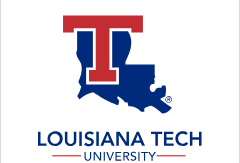Date of Award
Summer 8-2021
Document Type
Dissertation
Degree Name
Doctor of Philosophy (PhD)
Department
Molecular Science and Nanotechnology
First Advisor
Teresa Murray
Abstract
Traumatic brain injuries (TBI) result in impaired motor and sensory skills, which amplify over time due to the natural immune responses to trauma. Currently, there is no therapeutic on the market to treat the secondary damage from the cascading events caused by neurotrauma. In an experimental treatment method, poly(lactide-co-glycolide)-graft-polyethenimine (PgP) is used as a vector for drug delivery. This previously described method has successfully treated experimental spinal cord injury (SCI) using the nanoparticles for Rolipram (Rm) delivery, a phosphodiesterase inhibitor, to repair damage in a rat model. We proposed to utilize this same treatment to reduce secondary axonal damage after TBI.
A direct injection, used for the experimental treatment of SCI, can cause additional damage to the neural tissue after diffuse TBI; thus, it is not an efficient method of administration of therapeutics for a diffuse injury. The noninvasive use of intranasal (IN) and intravenous (IV) administration would avoid additional injury. Yet, IN and IV administration of PgP complexed with Rm (PgP-Rm) has not been attempted. This work shows that IN and IV methods effectively deliver PgP to the brain. That administration of PgP-Rm via these noninvasive delivery methods reduced secondary damage, resulting in reduced astroglia activation in the caudate-putamen.
Lastly, a surgical optimization was performed using a new Alcorix silicon-based shank probe for in vivo glutamate (GLU) recording. The use of implantable biosensors is of interest to allow the study of neurotransmitter activity in vivo, after TBI. Surgical optimization of the new probe led to the reinforcement of the junction between the shank and mounting board and incorporating a surgically mounted capsule to protect the probe’s reference wire. This optimized protocol resulted in a successful recording of GLU with sub-second resolution. This method can be utilized for future implant surgeries.
Recommended Citation
Jones, Claire Eleanor, "" (2021). Dissertation. 926.
https://digitalcommons.latech.edu/dissertations/926

